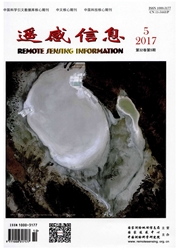

 中文摘要:
中文摘要:
以美国内华达州Cuprite地区的AVIRIS数据作为数据源,通过最小噪声分离变换(MNF)确定影像数据内在的维数,隔离数据中的噪声;然后计算像元纯净指数(PPI),得到"极纯"像元;将之输入到N维可视化器中提取端元波谱;利用波谱库进行波谱分析识别端元;最后利用匹配滤波(MF)和混合调制匹配滤波(MTMF)进行矿物信息提取,发现MTMF矿物信息提取的结果明显优于MF,并且对于分布比较集中的矿物识别的效果要更好。
 英文摘要:
英文摘要:
AVIRIS reflectance data in Cuprite,Nevada,United States was used.First the image intrinsic dimension was determined and data noise was isolated by minimum noise fraction rotation;then pixel purity index(PPI) was calculated and 7 "very pure" pixels was obtained.Afterwards,put them into n-dimensional visualizer to extract endmember spectrum;and the endmember was identified by the spectral analysis.At last the Matched Filtering(MF) and Mixture-Tuned Matched Filtering(MTMF)was used for mineral information extraction.The MTMF results are significantly better than MF,and for minerals which have a concentrated distribution the result is much better.
 同期刊论文项目
同期刊论文项目
 同项目期刊论文
同项目期刊论文
 期刊信息
期刊信息
